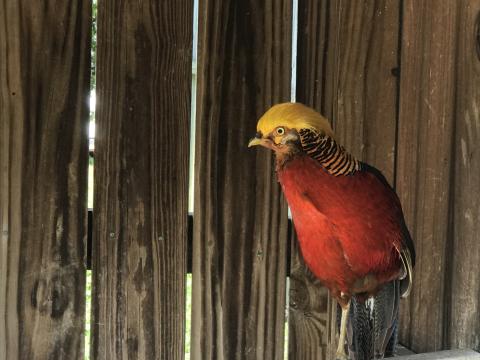Little Ponderosa Zoo and Rescue growing
I remember taking my son, Tobias, to the Knoxville Zoo sometime in the late ’70s. It wasn’t the zoo it is today—it was much smaller with fewer animals in smaller cages.
We saw Old Diamond, the first elephant that the zoo had acquired and the father of the first elephant in the U.S. born into captivity. My young son and I were really impressed. As a teenager, his best friend Evan volunteered in the Bird Show and later worked at the Knoxville Zoo, so Tobias spent some time there. Later in life, we had the rehearsal dinner for Tobias and his lovely bride Carey in one of the buildings at the zoo.
The Knoxville Zoo morphed into Zoo Knoxville and has a few distinctions not shared by other zoos in the U.S.
They have bred and raised several different species of animals, many of them endangered. They have made important contributions to the science of conservation. I had thought that Knoxville was the only zoo around.
But from time to time I kept hearing about this place called the Little Ponderosa Zoo and Rescue in Clinton. Hubby and I have done some rescue, dogs and horses mostly. Curiosity, and my love of animals and zoos, finally won out and we headed out there on one bright, sunny fall day.
I saw animals I do not remember ever having seen before. Yes, the goats, various deer and llamas were fun. After purchasing a bag of feed, I had plenty to feed these animals and they were super cute. And I had certainly seen camels and zebras before. But I think that this was my first experience with a Zebu (native to the jungles of Africa and South Asia), the rarely seen-in-the-wild Lady Amherst Pheasant (high altitude birds living at 6000-15000 ft.), the Red Golden Pheasant with its golden crest, the Patagonian Cavy (from Argentina with only about 120 existing in the entire U.S.), a Vervet monkey (which has 30 distinctive calls and can run on all fours), or the Patas monkey, the fastest primate in the world and from the grasslands of Central Africa.
The Little Ponderosa Zoo and Rescue is not a large zoo. It is not as sophisticated or polished as Zoo Knoxville. It started out as the Cox family petting zoo. Then they began to receive requests to take in exotic pets that people either no longer wanted or were unable to keep. Today about 98 percent of the animals are exotic rescues from around the U.S.).
It doesn’t take long to get through the zoo, but I really enjoyed seeing the animals and I support the work that the Cox Family has done over the years.
On December 4, 2017, there was an electric short in the barn where many of the animals were housed. The staff had only minutes to evacuate as many animals as they could. Not all could be saved.
A Great Pyrenees pup name Charlie managed to get all but seven sheep out of the barn—while suffering burns himself. Many animals were lost, including all the reptiles, foxes, macaque and marmoset monkeys, porcupines, ferrets and hedgehogs. The staff and Cox family were devastated and heartbroken.
But they rebuilt and they continue to grow. They are now a certified wildlife rehabilitation facility. They rescue, rehabilitate and release most native Tennessee wildlife including racoons, rabbits, possums, birds and more. And they are the official zoo of Anderson County.
The Little Ponderosa Zoo and Rescue in Clinton is open 10 a.m. to 5 p.m. Monday through Saturday and noon to 5 p.m. on Sunday. Admission is $15 for adults, and $10 for juniors and seniors. Two and under are free.
They offer small, medium and large buckets of feed ($6-$20 depending upon size), pony rides ($8) and stroller rentals.
Their website is https://littleponderosazoo.com
- Log in to post comments



